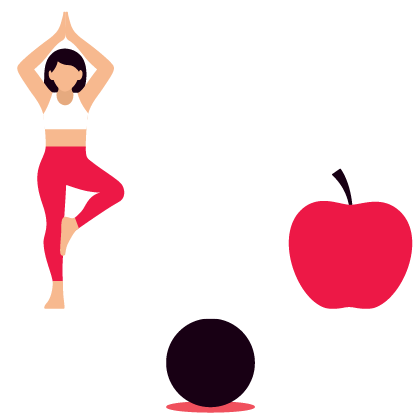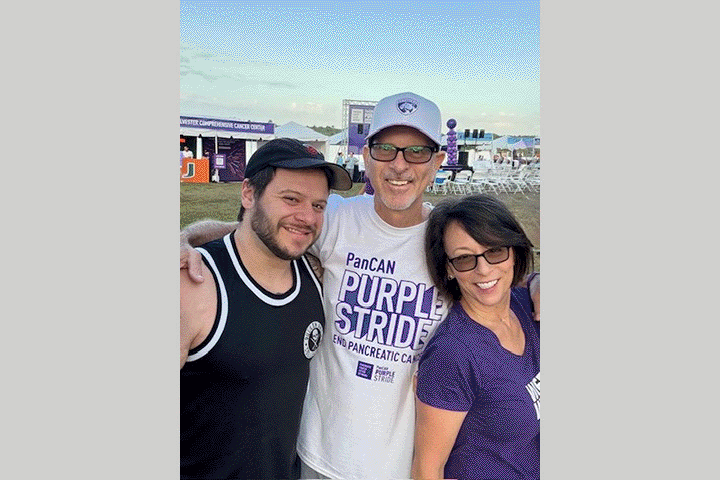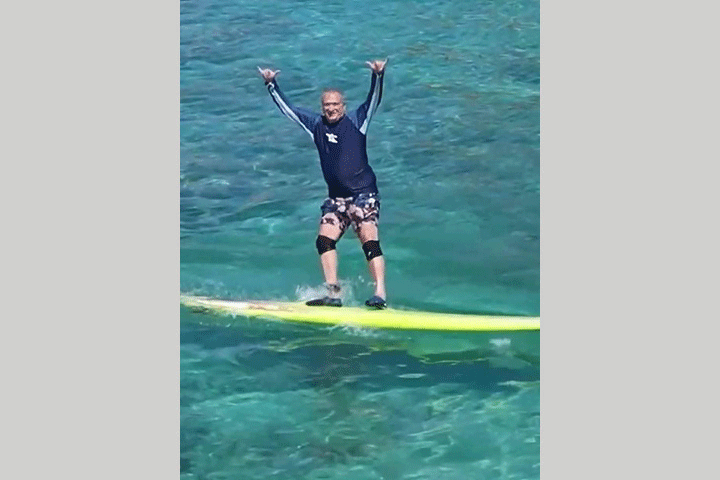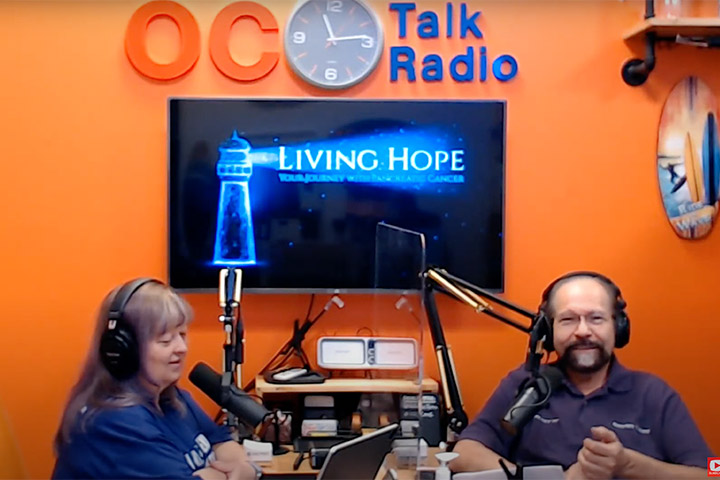How to Live with Cancer: Practical Tips

This essay provides practical advice about how to survive with cancer.
Perhaps you have just been diagnosed and have no idea how to prepare. Maybe you are a caregiver for a family member and worried about what you’ve found (or not found). I hope that some of the ideas here are of use.
OK, but who am I to tell you how to live with cancer? Good question; everyone’s cancer is different. You should listen to me for two reasons. The first reason is that I was diagnosed with stage IV oropharyngeal squamous cell carcinoma (OPSCC), a tongue cancer, on July 3rd, 2020. From July 2020 until today, I have never been cancer-free. Nevertheless, more than four years after my diagnosis, here I am. My survival gives me standing to write about how to live with cancer.
The second reason to listen to me is that I trained as a clinical psychologist. Psychologists don’t know anything about cancer physiology, but we do know something about how humans cope with disasters, and we have experience helping people cope better.
So, let’s talk about good kit: the stuff that will help you live longer with cancer.
Good Kit
Here are some practical suggestions of things that I have found make life easier to manage. Some items help me better manage treatment, while others make living more comfortable.
- I receive intravenous medications or saline every day. To reduce the number of intravenous needle sticks I get each day, I had a peripherally inserted central catheter (PICC) line installed. If you get a PICC line, get a sleeve to protect it. For women, sleeves come in many fashion choices that go with sleeveless tops. PICC sleeves for men come only in black and look like something you would wear while weightlifting. PICC line protective sleeves are worth having, regardless.
- Do everything you can to prevent the development of thrush, also known as oral candidiasis. Lightly scrub your mouth with an ultra-soft toothbrush. A home suction machine works even better.
- Buy lots of night lights and place them wherever you walk in the dark.
- Get a lap desk or a chair if you write in bed. Then, get a lamp with a long bendable neck that clamps to the lap desk.
- If you wear glasses, get one of those tethers favored by canoe guides and librarians.
- Buy an electrical outlet power strip for every room you spend time in.
- You can’t use a gadget with an uncharged battery. Get chargers with sufficient connectors for every device you own.
- I found a bag for cables that allows me to keep each white cord in a separate compartment. Otherwise, if you throw them all together into a bag, the 2nd Law of Thermodynamics means that every cable you own will tangle itself with every other cable.
- Get a light, foldable walker with a shelf to put things on.
- Make sure that every food and water container has a screw-on lid.
Good Kit Is Essential, But So Is Good Practice
Americans have built cults around their elite military units, like, for example, the Deltas, SEALs, or the Army Rangers. I admire these men and women’s skills, attitudes, and dedication. However, it’s interesting that while special operators prize good kit, they recognize that what makes kit valuable is that it supports good practice, which beats good kit.
I once heard an interview with a colonel who commanded a battalion of the 75th Ranger Regiment. He said that a special operator’s advantage over his adversary wasn’t access to exotic weapons or systems—the stuff Ethan Hunt uses in the Mission Impossible movies—which he viewed as a distraction. The special operator’s advantage was in PT (Physical Training), BRM (Basic Rifle Marksmanship), and CQB (Close Quarters Battle). In English, this means that special operators aren’t Marvel superheroes; they’re just better at the fundamentals of infantry warfare.
Special operators and surgeons have a mantra describing how they understand good practice: “Slow is smooth. Smooth is fast.” “Slow is smooth” means that you allow a practice whatever time it needs so that you can perform it fluently. “Smooth is fast” because you make fewer mistakes when you perform a task fluently. I repeat the “Slow is smooth” mantra many times a day.
I also live by the Japanese exclamation, “Kaizen” Kaizen translates as “beautiful practice,” but what it means is “improve your practice through the discovery and implementation of many tiny changes in your workflow.” Kaizen defeats haste and procrastination while achieving “Smooth is fast” fluency by focusing on one tiny change at a time.
Good Practices
- If possible, get connected to a palliative care program. There is a widespread misunderstanding that palliative and hospice care are the same. Palliative care does not attempt to cure your cancer, but that doesn’t mean you can’t stay in your current treatment program while receiving pain management from a palliative care physician. Most oncologists believe they know how to control your pain; they are often wrong.
- Set up a go-bag with all your necessities. As you can read in my essay, Three Months from Hell, I have been unexpectedly hospitalized on many occasions. The hospitalization goes much better when I have my necessities with me. The same can be true if I want to spend an afternoon writing in our backyard instead of my bedroom. To make these moves easier, I keep necessities in a go-bag.
The go-bag is a small laptop backpack with just enough space for everything I need. It has many pockets, consistent with another good practice: “a place for everything and everything in its place.” What can happen when a necessity is not in its place? I once arrived at the Cancer Centre without my Ontario Health Insurance Plan (OHIP) card. The card was at home in a Very Sensible Place, on the top of my dresser. Not having my OHIP card meant I could not get routine blood work performed until I could persuade a Cancer Centre nurse to come to the blood lab and vouch for me.
I use an “everything in a bag or a bag within a bag” system to have a place for everything. Everything in a bag means that everything has its proper place.
All the bags have zippers, and the bags or go-bag pockets are always zipped when not in use so nothing gets lost.
Health and Fitness Routines
- It’s vital to maintain daily dental care. Chemotherapy and radiation can cause mouth sores, and as I mentioned earlier, you want to avoid thrush.
- Even more important, keep up a fitness routine if you can. For me, this is yoga and Peloton biking. If you get weak, you are more likely to fall, and falls can be fatal for a frail cancer patient.
- Take the time to master the patient portal to your electronic health record (my hospital uses the Epic™ EHR; the patient portal is called MyChart™). Check it regularly and make sure every appointment is on your calendar.
- Finally, make time for your dog or cat. Your animals love you, and they know when you are ill. Unfortunately, they also become confused and anxious. Make the time to cuddle or stroke them, and you will both benefit.
Conclusion
If one of my tips helps you, please pass a link to my essay to another patient or family member afflicted by cancer. I write about cancer and the end of life from a first-person point of view on my Substack. You can find some of my scientific writing and my publications in Christian magazines at my author website.
William Gardner was a child psychologist, statistician, and mental health services researcher. He studied children’s mental health interventions, statistical methods, psychiatric measurement, and health system change. He was a professor of epidemiology and psychiatry at the University of Ottawa. He is also the CHEO RI and University of Ottawa Senior Research Chair in Child and Adolescent Psychiatry. He has published in many journals, including Science, the New England Journal of Medicine, JAMA, JAMA Pediatrics, JAMA Psychiatry, the American Psychologist, and Developmental Psychology, among other journals. Although he is not an economist, he blogs at The Incidental Economist. Other writing can be found on his Substack and at his author website. Dr. Gardner passed away shortly after this article was published.







